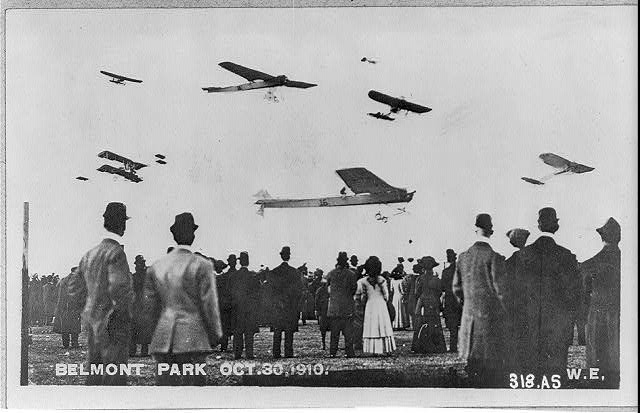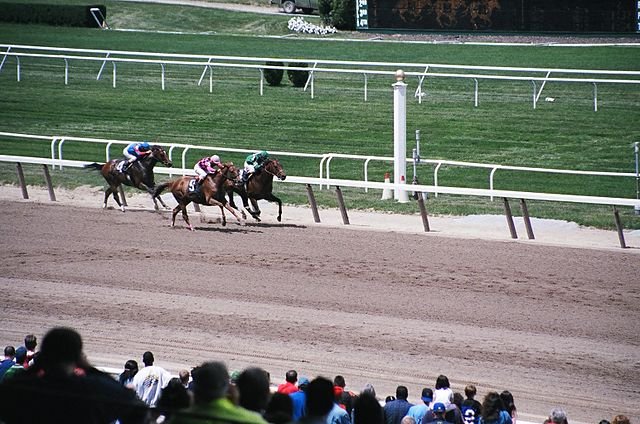Of all the storied sporting events that have taken place in New York over the years, arguably, none have the glitz, glamor, and history of The Belmont Stakes. And that race takes place every June in Belmont Park in Elmont. The eyes of the world turn to Long Island and Belmont Park annually as the best of the best take to the track, especially in a year when some 3-year-old thoroughbred racehorse is vying for the Triple Crown by winning The Kentucky Derby, the Preakness and the final leg of The Belmont Stakes.
Belmont Park Racetrack’s history is tied to the history of New York, and a father and son who also helped to finance the New York City subway system. You don’t have to travel all the way upstate to Saratoga to experience horse history. Just make your way to the border of Nassau and Queens and spend the day at the races when the horses are running in the spring and summer.
Below we gathered some interesting, crazy, and nostalgia-inducing facts about Belmont Park and the Belmont Stakes.

Portrait of August Belmont / Daguerreotype [puublic domain]
- The inaugural Belmont Stakes was first run in 1867 at Jerome Park Racetrack in the Bronx
- The Belmont Stakes is the oldest of the Triple Crown events
- The first winner was named Ruthless
- The Belmont Stakes was named for August Belmont, I, a businessman who helped finance the race
- The Belmont Stakes was originally run in a clockwise direction
- In 1921 the race ran first ran counter-clockwise
- Sir Barton was the first horse to win the Triple Crown in 1919
- In 1890 the Belmont Stakes moved to Morris Park Racecourse in the Bronx
- Belmont Park Racetrack opened on May 4, 1905
- It was built by a group of investors that included August Belmont, II
- The site was originally called Foster's Meadow, and was home to a Tudor-Gothic mansion owned by William de Forest Manice
- Belmont Park, which was named for August Belmont I, became the new home of the Belmont Stakes when it opened
- It cost $2.1 million to build the original Belmont Park

Photo: Crowd watching seven planes in air at Belmont Park air show, New York [public domain]
- In 1910, Belmont Park was host to the International Aviation Tournament air show staged by Wilbur and Orville Wright. It featured a race to the Statue of Liberty and back
- There used to be another, nearby track, called Belmont Park Terminal
- August Belmont, II also helped finance the original New York City subway
- From 1911- 1912 a New York State law banning gambling cause racing at Belmont Park to come to a halt. Racing resumed in 1913
- In 1918, Belmont Park track served as the NYC terminal for the first airmail service between New York and Washington, D.C.
- The legendary horse Secretariat finished the race in a world record 2:24 on a dirt track in 1973
- Secretariat won the race by 31.5 lengths
- There is a blue-and-white striped pole that 31½ lengths from the finish line to mark Secretariat’s win
- Ruffian,a filly who had to be euthanized after a race at Belmont, is buried under the flagpole on the track with her nose pointed towards the finish line

Photo: Belmont Park from the NYRA Facebook page.
- The dirst racecourse is nicknamed "Big Sandy" because it is the longest dirt thoroughbred racetrack in North America
- The circumfrance of “Big Sandy” also known as the Main Track is 1.5 miles (2.4 km)
- After being rebuilt in 1968 at a cost of $30.7 million, Belmont Stakes has the largest grandstand in Thoroughbred racing
- Julie Krone became the first woman to compete in the Belmont Stakes in 1991
- The largest crowd at Belmont was 120,139 people in 2004
- During that race, Birdstone upset Smarty Jones in its Triple Crown bid
- 700 carnations make the blanket draped on the winning horse of the Belmont Stakes
- A Japanese White Pine on the grounds was planted in 1826 and is a part of the Belmont Park logo
- Iron gates from Jerome Park Racetrack that depict the first Belmont Stakes are in the clubhouse at Belmont Park to this day
- Belmont Park actually extends into Queens on the western end













